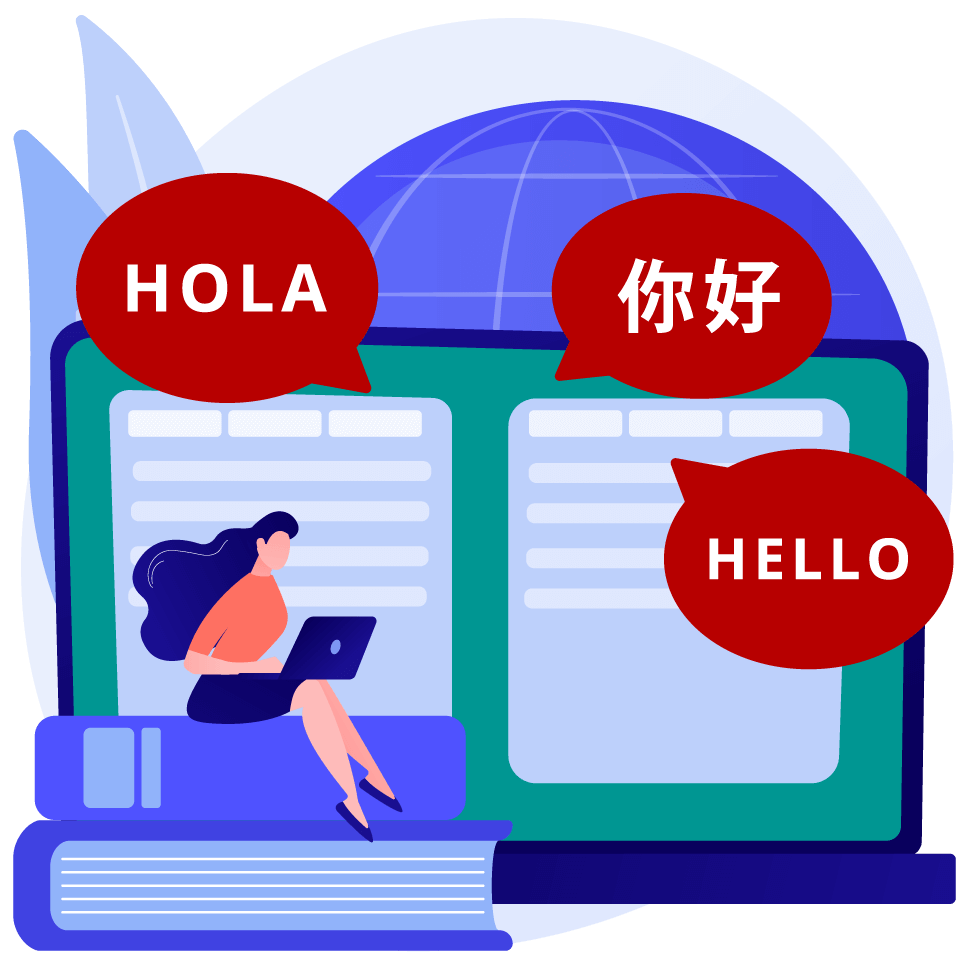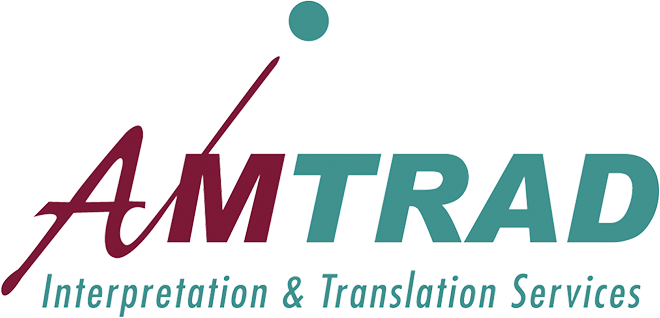Interpreters and Translators
Today more than ever, overcoming language barriers aided by translators and interpreters opens doors to new opportunities to interact in our increasingly global environment.
You might ask yourself what’s the difference between a translator and an interpreter? Well, the answer is:
A translator is a fully bilingual, trilingual or multilingual individual who takes a message written in a source language and relays it in a target language. Translators develop superior knowledge of the languages they work with and the jargon used in specialized contexts. Another distinguishing feature is that translators produce impeccable texts (in terms of grammar and spelling) that are clear, easily understood and adapted to the context of the target reader.
Translators often have specialist subject knowledge which ensures accurate and contextualized translations. Medical and legal translations are examples of texts that require a higher degree of specialization, although by no means are the only ones. Industries, for example, require translators who specialize in the processes, systems and in-depth aspects at the core of their activities.
Translators work with documents such as:
Brochures, manuals, scientific and medical papers, market analyses, employee handbooks, medical histories, books, contracts, presentations, apps, web sites, blogs, software, financial information, corporate and business reports, among many others.
Some translators become experts certified by the Superior Court of Justice, Supreme Court of the Federation or state-level courts. This certification as expert translators empowers them to ascertain that their work has been rendered faithfully to the best of their knowledge and that they had the original source document in sight. These certified translations can be used for legal formalities abroad, or in dealings with the embassy or consulate in the end-users’ place of residence.

Examples of expert certified translations include:
- Adoption papers
- Birth certificates
- Death certificates
- Diplomas
- Divorce certificates
- Marriage certificates
- Passports
- School grades
- Mercantile and purchase-sale contracts
- Financial statements and reports
- Private legal documents
- Lawsuits
- Lease contracts
- Expert reports
- COVID-19 test reports
Translators also render services such as:
- Subtitling
- Transcription
- Proofreading and Copy Editing
Now, let’s talk about interpreters...
While translators produce written documents, interpreters listen to oral messages in a source language which they relay in a target language. This requires developing other kinds of linguistic and mental skills because interpreters very often work in conferences providing simultaneous renditions of what is being said.
With the arrival of COVID-19, interpreters have broadened their range of services to include important modalities such as:
- RSI or Remote Simultaneous interpretation, also known in Spanish as ISaD.
- Telephone Interpretation
- Long and Short Consecutive Interpretation
- Dubbing and Voiceover

Specialty
Most interpreters specialize in specific fields of knowledge such as medicine, in which case they interpret topics in cardiology, urology, nutrition, ophthalmology, proctology, internal medicine, dermatology, traumatology, rheumatology, pediatrics, orthopedics, veterinary medicine. Other areas of expertise include agriculture, the environment, information and communication technologies, politics, energy, oil, organizational development, aquaculture, engineering, legal, zoology, economics and finance, manufacturing, trade, biotechnology, aviation, theology, among many others.

Language
Likewise, interpreters are different from their peers in the number of languages they work with. Some are bilingual or trilingual and others are multi-lingual. In Mexico the languages most often required are English, Spanish, French, Portuguese, Italian, Japanese, Russian, Arab, Chinese, and German.
Interpretation Modalities
Simultaneous interpretation. Consists in interpreting a spoken message from one language to another conveying it simultaneously in a logical, empathetic, accurate and true manner. It is mainly used during conferences, congresses, seminars, summits, negotiations and similar events.
Remote Simultaneous Interpretation (RSI). In Mexico this is also known as Interpretación Simultánea a Distancia (IsaD) and is the most widely used modality today due to the COVID-19 pandemic. This situation, however, has also led to hybrid events in which interpreters work remotely while participants interact on site.
Consecutive Interpretation. This modality can also be used remotely. It is important, therefore, to engage interpreters who are fully trained for this mode of interpretation that requires excellent short-term memory, note-taking skills and clear diction. Consecutive interpretation involves listening to a message for a certain amount of time (one or two sentences in short consecutive, or a few minutes in long consecutive) and then relaying it in the target language alternating with the speaker. Consecutive interpretation is mostly used in small meetings, press conferences, interviews and brief speeches.
Voiceover. This is market in itself as a great deal of information is released on social networks. In this modality an interpreter’s voice is inserted directly into a video. The source language may remain in the background while the language being interpreted is in the foreground.
An Accompanying Interpreter plays an important role in business meetings, interviews, contract signings, and one-on-one meetings. In this case, an interpreter remains close to no more than 2 people requiring interpretation which is delivered either simultaneously or consecutively.
It’s important to point out that some events are held in several languages. In these situations, interpreters use a relay system and listen to a source language they work with in order to render the message in the target language they have been assigned.

Amtrad strives every day to offer solutions that bridge language barriers to bring users clear, objective communication that informs their new vision of the future. In an increasingly globalized environment, distances are shorter every day. This is why we always find optimal linguistic solutions to satisfy your communication needs.
Our team is made up of a group of collaborating professional interpreters and translators. Their expertise transcends basic language skills in order to translate the cultural aspects of the messages they work with customizing them to their target audience while preserving the essential message intact.
In selecting the translators and interpreters who will collaborate in a project we consider their native language and knowledge of the source languages required, their field of knowledge and years of experience.
Let Amtrad take care of your linguistic projects and rest assured that they will be processed by a team of professionals devoted to relaying your original message in the target language you require, accurately and reliably.
Our commitment:
Accurate language use and adaptation for target users
Reliability and on-time delivery
All projects entrusted to us remain strictly confidential

Frequently asked questions about translation:
In general, certified translations are used to validate that they are faithful to the best of the translator’s knowledge and match the original document that the translator had in sight. Certified translations are also used in legal formalities and/or to comply with the requirements of government, education agencies and other legal entities.
Amtrad seeks to establish deadlines that will allow us to fulfill our commitments. The time necessary to complete a translation will depend on the scope of the project and is estimated according the maximum number of words per day a translator can produce.
Yes, although the cost may be higher to cover overtime.
We estimate how many words will result once a document is translated, but we only charge for the word count in the final translation.
It is estimated according to a fair cost formula that considers subject matter, document format, world count, and target language. This is why we recommend you share with us the document to be translated and the scope of the project so we can provide our best quote.
There is the risk of ending up with a poorly translated text that is out of context or unintelligible. A proper translation should read smoothly and preserve the same intention as the original text.
Google Translate is a tool that merely translates words. It does not put them into context, nor does it apply the sensitivity and cultural expertise a translation requires. By contrast, a translation rendered by a professional stands out for good writing and faithfulness to the original message.
Subtitling software basically makes use of voice recognition systems and therefore cannot relay (write) the message accurately, since it is dependent on understanding a speaker’s diction which can be confusing. This kind of software writes what it “hears”, so the final product lacks context, accuracy, good writing, and punctuation.
Frequently asked questions about interpreters:
A specialized interpreter ensures greater knowledge and experience in a given field of knowledge and this makes their rendition in any modality flow smoothly within a more accurate context. Thus, a source message is better communicated and understood.
No. Interpretation requires special skills and techniques that are developed after long hours and years of practice and study. It is important not only to master a target language but also the source language. Besides, during an assignment, an interpreter performs seven actions simultaneously, and this can only be accomplished through practice.
Yes. Technology and special relay equipment make it possible to produce multilingual communication.
Simultaneous interpretation places a high cognitive and emotional load on interpreters. Additionally, it has been scientifically proven that an individual can maintain peak understanding levels for up to 2 hours. After that time concentration declines significantly. Therefore, in order to provide quality service an interpreter is required to work alone no more than 1:30 to 2 hours, depending on the difficulty of the subject being interpreted. Two or more interpreters working in the booth take turns about every 20 minutes, and in this way they can expand their concentration time and work for up to 8 hours with breaks in between. Complicated languages such as Japanese, Chinese, and Arab require three interpreters to complete an 8-hour workday. This of course is also contingent upon the duration of the event.
Understanding the specifics of an event beforehand, allows interpreters to prepare more accurate terminology, and if necessary research the subject matter more closely to be better prepared for the conference. Although an experienced interpreter has a superior knowledge of the source language, having on hand the key terms of the event will eliminate uncertainty from the interpreter’s cognitive load and instill confidence. This can only benefit end-users.
Consecutive interpretation takes double the time taken by a simultaneous interpretation. This is why it is not recommended for events lasting more than 30 minutes. Consecutive interpretation involves note-taking in order to relay the general idea of what is being said, whereas simultaneous interpretation conveys the information more completely and in real time. Nevertheless, both modalities are frequently used during the same event.
Yes. Working conditions have a significant impact on an interpreter’s performance. Interpreters depend on what they can see and hear if they are to convey clear and accurate messages. This is why it its crucial to provide them with professional equipment to ensure they have quality incoming sound; a professional interpretation console to guarantee that listeners receive the target language they need, and that allows interpreters to switch feeds in order to listen to their colleague’s relay; as well as a sound-proof booth with enough space to accommodate their working tools.
General questions
Absolutely. The ethics code of the professionals Amtrad hires compels them to maintain information secret. This means that any materials you share with us will be deleted or destroyed. We ensure they will not be misused.
A source language is the original language of the message to be translated or interpreted into the target language required by the end-user.
Of course. Just fill out the format in our “Quotes and Contact” section and one of our representatives will find the best solution for your project.
You can make your payments via credit card, PayPal or electronic funds transfer. Bear in mind that in credit card or PayPal payments additional charges to the cost of service may apply, including other commissions.
Yes. Mexican businesses in the country must pay 16% VAT. However, companies headquartered abroad are exempt from this tax provided payment is made via electronic funds transfer from an account outside of Mexico.
Get a quote
Fill out the form and an executive will contact you

